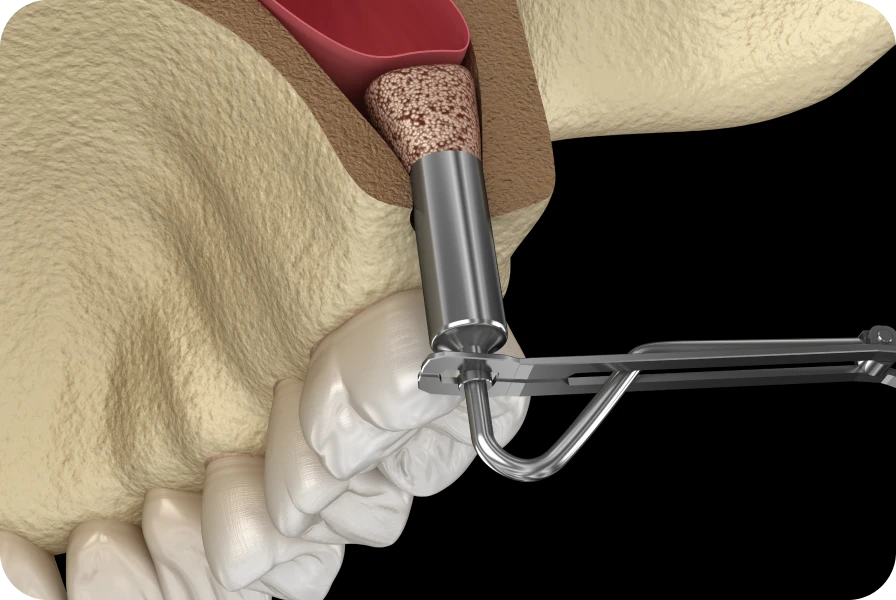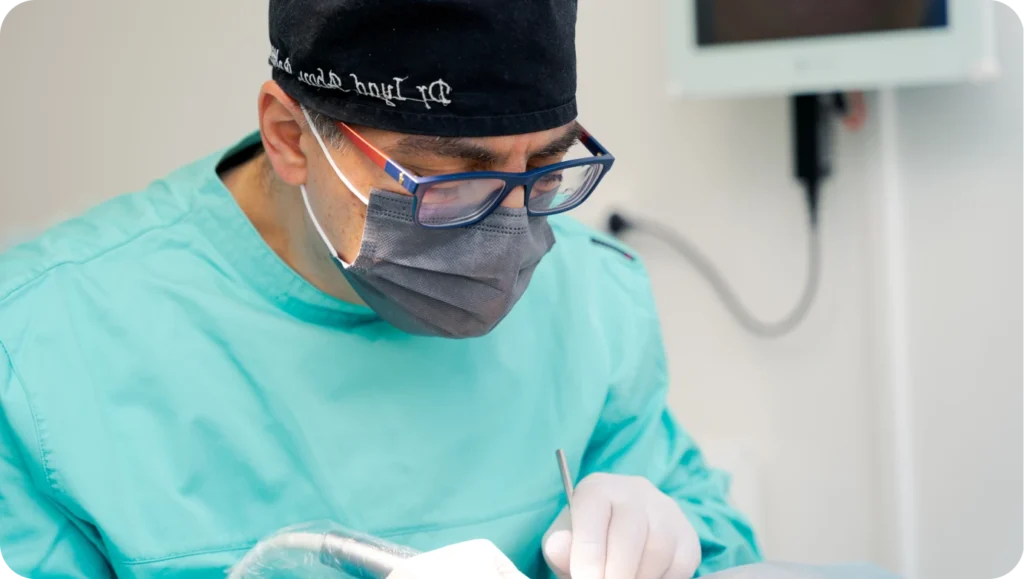Sinus Lift
The sinus lift is a common procedure in dental implantology. This intervention prepares the upper jaw for receiving dental implants. If your bone is not thick enough to accommodate an implant, a sinus lift becomes necessary. It creates space to increase the amount of available bone. This technique offers an effective solution for patients with insufficient bone structure.

Preparation for the Procedure
Before opting for a sinus lift, it is essential to consult a dental health professional. They will be able to assess whether this procedure is necessary for you. You must follow your dentist’s recommendations to prepare for the procedure. A sinus lift is often recommended when the upper jawbone is too thin. This can be due to bone loss or the proximity of the maxillary sinus to the oral cavity.
Before the sinus lift, it is important to follow the instructions provided by your practitioner. Proper preparation ensures the success of the procedure.
You must stop smoking, if applicable, to promote proper healing. It is also recommended to maintain good oral hygiene before the procedure. Your dentist may prescribe antibiotics to prevent infection. Be sure to follow all instructions carefully.
Procedure Overview
On the day of the procedure, you will be prepared for the operation. Local anesthesia is generally used to ensure your comfort. The practitioner then makes a small incision in the gum to access the jawbone. A space is created under the maxillary sinus, where a bone graft is placed. This graft can come from various sources, such as your own body or synthetic materials.

The sinus is then lifted to insert the graft, thereby increasing bone height. This step is crucial to ensure that the dental implant has sufficient bone for integration. Once the graft is in place, the incision is closed, and the healing period begins.
Post-operative Period
After the procedure, carefully follow your dentist’s instructions. It is important to remain vigilant to prevent complications. You must avoid blowing your nose or exhaling forcefully through your nose to avoid disturbing the graft. Your dentist may prescribe medication to manage pain and prevent infections. It is also recommended to consume soft foods during the first few days to avoid irritating the operated area.
Healing and Follow-up
Healing after a sinus lift takes several months. It is essential to adhere to follow-up visits to ensure proper recovery. During this period, the grafted bone fuses with your natural jawbone. Once this fusion is complete, your dentist can assess the success of the procedure. If all goes well, you will be ready for dental implant placement. Regular dental visits are crucial to monitor the healing progress.
Possible Complications
Like any surgical procedure, a sinus lift carries risks of complications. These complications may include infection, excessive bleeding, or an allergic reaction to the materials used. It is important to report any unusual symptoms to your dentist, such as severe pain or persistent swelling. Prompt attention to these signs can prevent more serious problems.
Alternatives to Sinus Lift
In some cases, a sinus lift may not be necessary. Alternatives exist, such as the use of short or tilted implants, which can bypass the need for a sinus lift. Discuss the available options with your dentist to determine the best solution for you. Advances in implantology now offer many solutions adapted to each individual situation.
Cost of the Procedure
The cost of a sinus lift can vary depending on several factors, such as the complexity of the procedure and the materials used for the graft. It is recommended to request a detailed quote before making a decision. Also, check if your health insurance covers a portion of the costs associated with this procedure. Cost should not be the sole decision factor, but it is important to fully understand the financial implications.
Psychological Preparation
Mental preparation for a sinus lift is as important as physical preparation. Understanding each step of the procedure can help reduce anxiety. Do not hesitate to ask your dentist questions to alleviate your concerns. Adequate mental preparation contributes to a better overall experience.
Diet and Hygiene after the Procedure
After a sinus lift, it is important to follow an appropriate diet. Prioritize soft foods and avoid those that may irritate the operated area. Good oral hygiene is essential to prevent infections. Brush your teeth gently and use an antibacterial mouthwash if recommended by your dentist.
The sinus lift is a crucial procedure for those who require dental implants but do not have sufficient bone in the upper jaw. Following your dentist’s recommendations before, during, and after the procedure is essential to ensure treatment success. With adequate preparation and rigorous follow-up, you can approach this procedure with confidence.
